How to Make Fermented Garlic in Honey
Fermented garlic in honey is a delicious and easy immune booster that can be made easily at home. The fermentation process not only creates a unique flavor to the garlic but also preserves it.
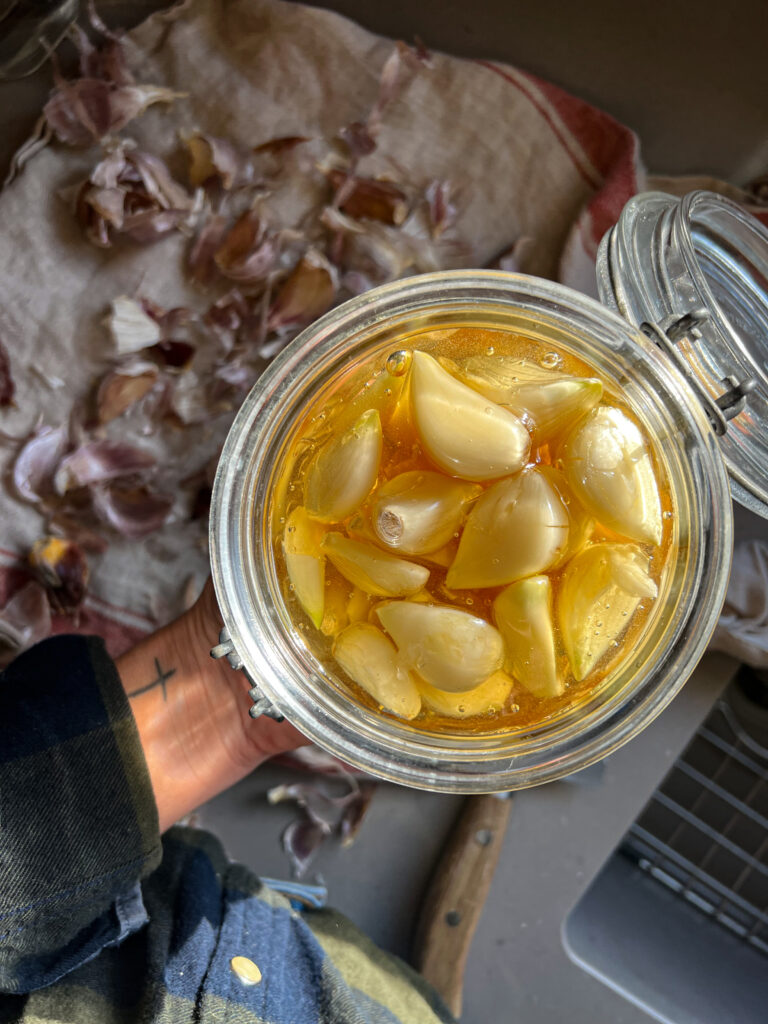
There are so many amazing things that can be made with garlic. The opportunities to incorporate this mighty little bulb of health are endless! Read more about how we grow fresh garlic here on our farm. It is one of our kitchen staples and if the kitchen isn’t a smell of chocolate chip cookies then it’s garlic!
Honey Garlic Ferment Recipe
Fermented honey garlic is a delicious and simple immune-booster that can be made easily at home. The fermentation process not only imparts a unique flavor to the garlic but also preserves it. Here’s a simple recipe to make fermented garlic in honey:
Ingredients:
- Fresh garlic cloves (as many as you want). You can also use frozen already peeled cloves.
- Raw, unpasteurized, local honey, if you can find it (enough to completely submerge the garlic)
- A clean glass jar with a lid
- Glass weight
- Optional: herbs or spices like rosemary, thyme, or red pepper flakes for added flavor

Instructions:
Prepare the Garlic
- Peel the garlic cloves and trim the ends if necessary.
- If you’re using larger garlic cloves, you can cut them in half or quarters for easier consumption.
- I like to smash the garlic with the broad side of my knife to help release the allicin into the honey which is what adds the health component, complexity and depth to the garlic.
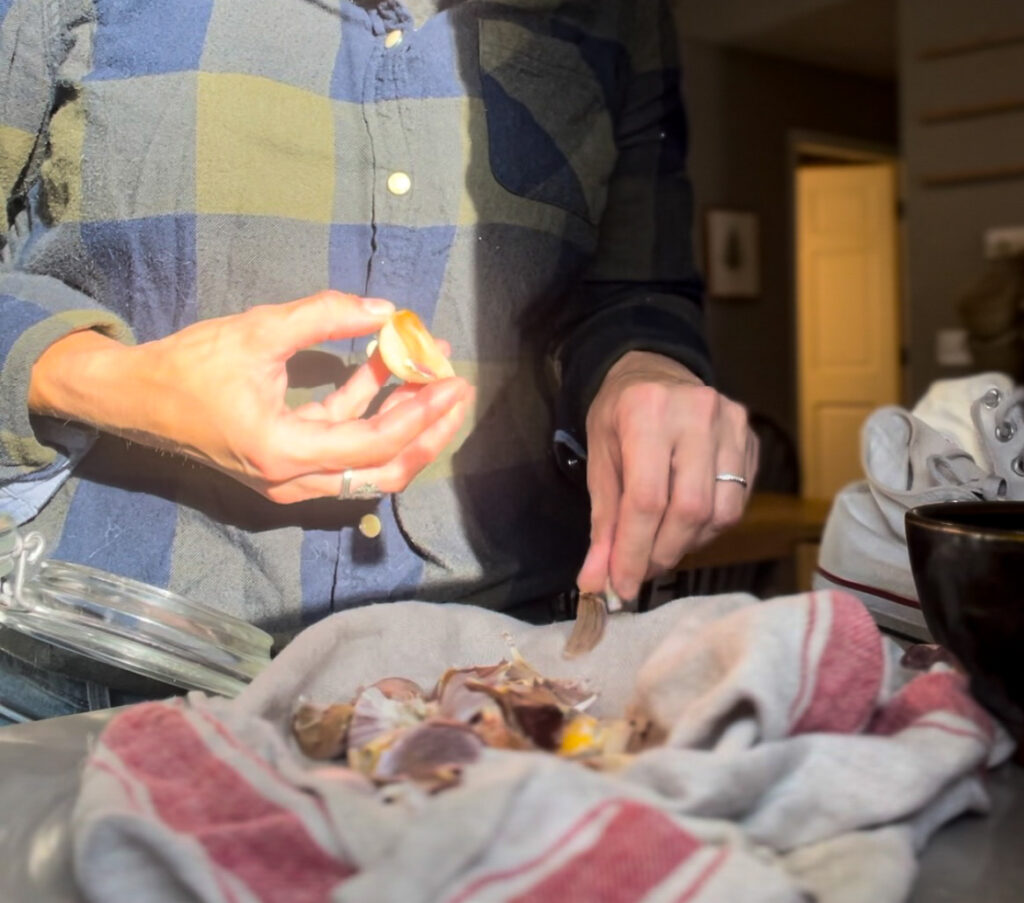
Sterilize the Jar
- Ensure that your glass jar and lid are thoroughly clean and dry. You can run them through the dishwasher or use boiling water to sterilize them.
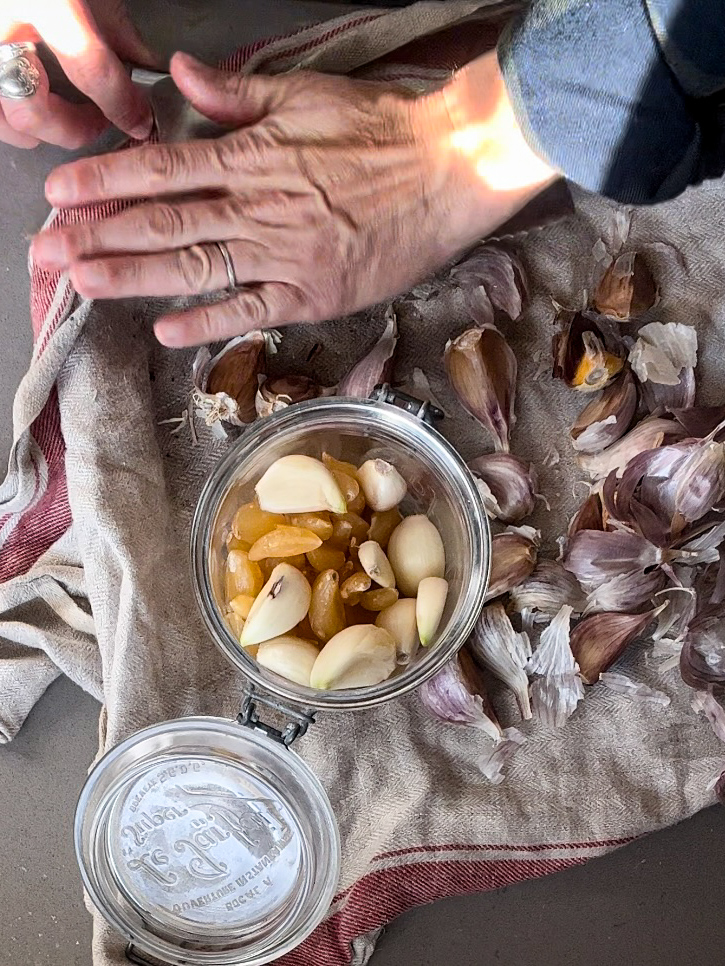
Add Optional Herbs/Spices (optional)
- If you want to infuse your fermented garlic with additional flavors, now is the time to add herbs or spices. Simply sprinkle them over the first layer of garlic.
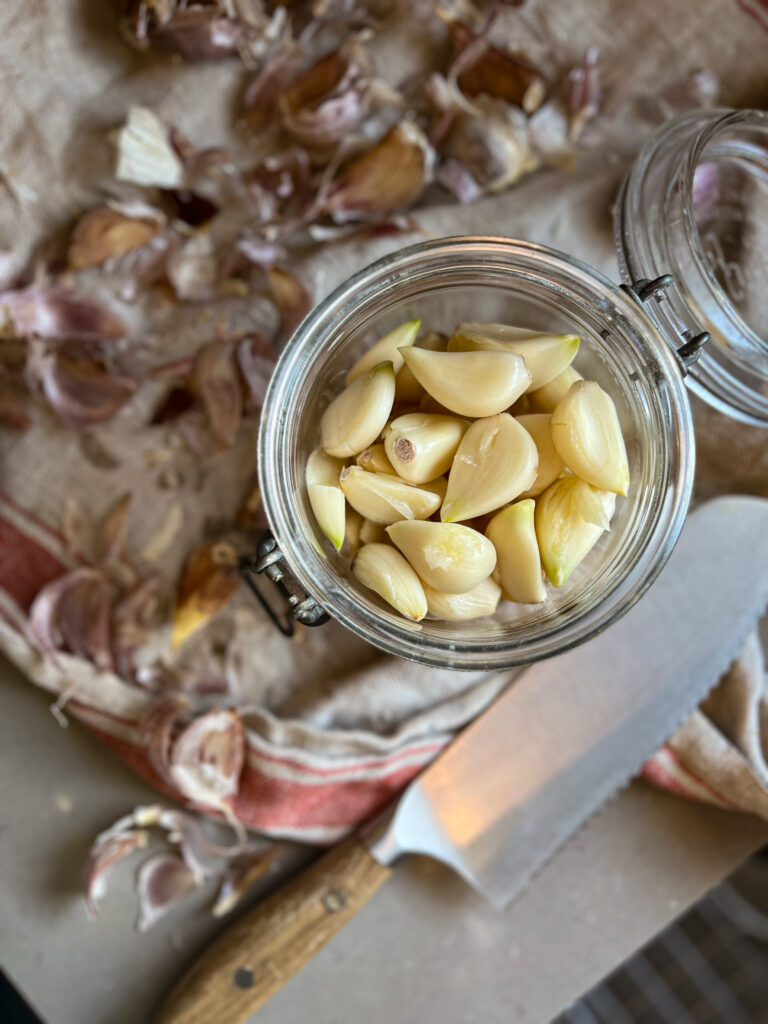
Continue Layering
- Add more garlic cloves on top of the herbs or spices if used. Repeat the process until the jar is nearly full but leave some space at the top, about an inch or so.
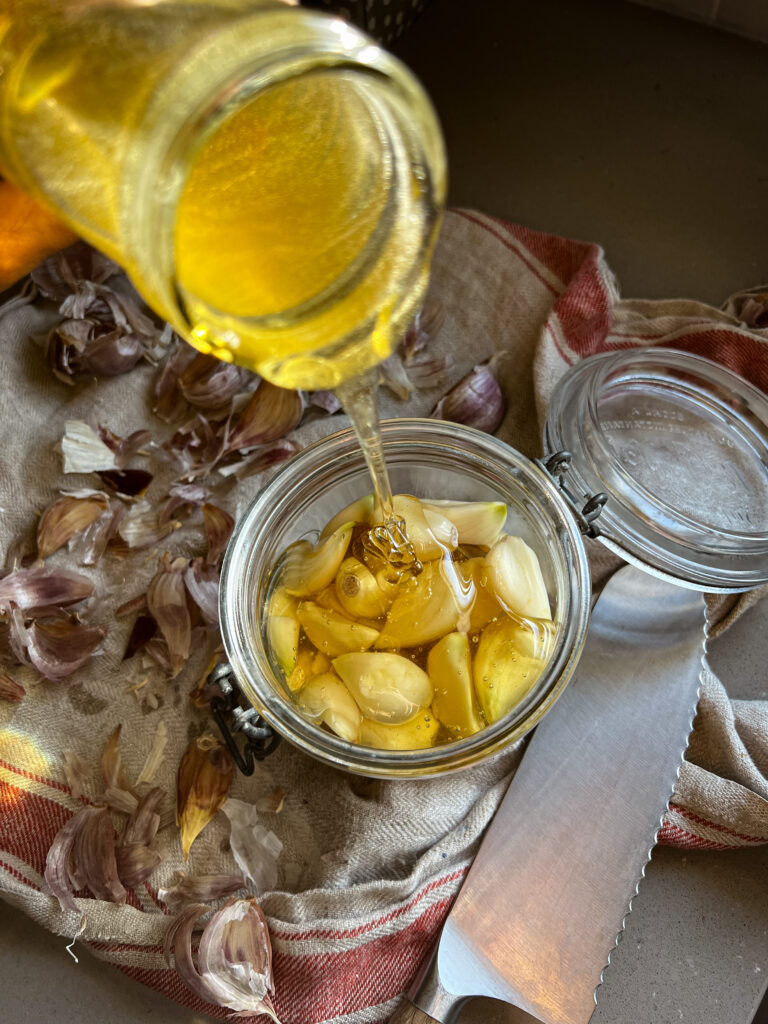
Pour Honey Over the Garlic
- Slowly pour raw honey over the garlic cloves until they are completely covered.
Bubbles and Fermentation
- Tap the jar gently or use a clean butter knife sliding it in and out of the jar to release any trapped air bubbles.
- I add a glass weight on top of the garlic to keep it under the honey, similar to how I make my big batch sauerkraut.
- Screw the lid onto the jar, but not too tightly. The fermentation process produces gas, and a too-tight lid can cause pressure to build up.

Fermentation
- Place the jar in a cool, dark place and allow it to ferment for at least a few weeks, though many people prefer to leave it for several months to develop a richer flavor.
- Check the jar occasionally to make sure the garlic remains submerged in honey. If some garlic pieces float to the top, press them down to ensure they’re covered.
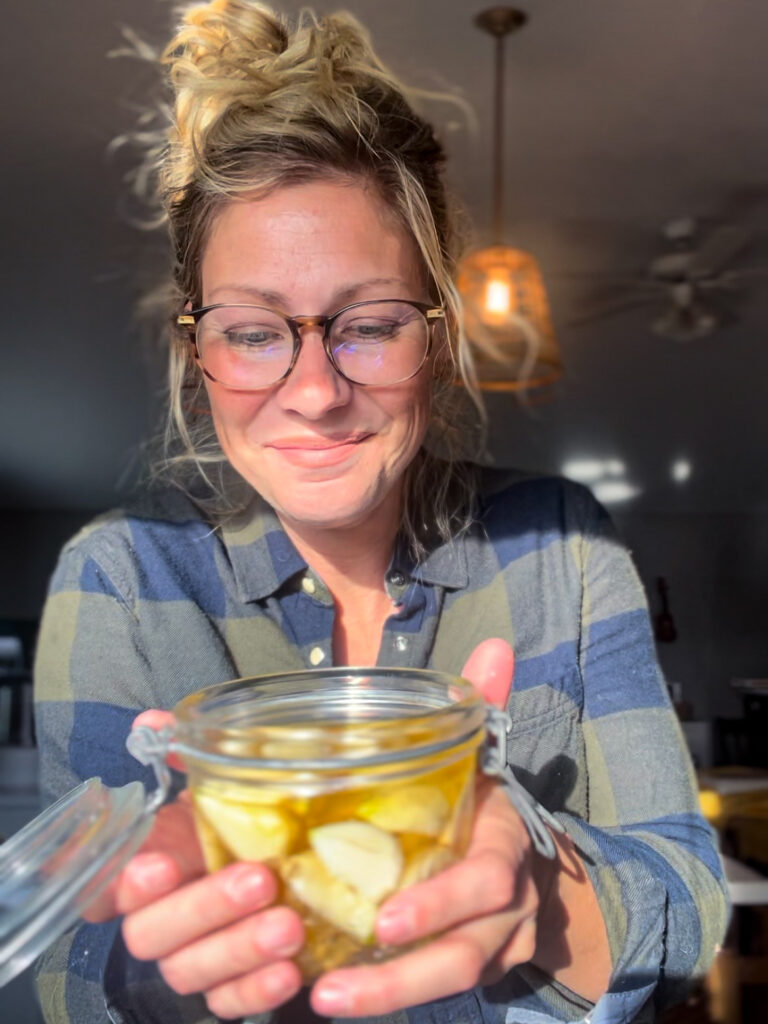
Enjoy
- Once the garlic has fermented to your desired taste, you can start using it as a condiment, in recipes, or as a health supplement.
I use one of my favorite glass weights to keep the garlic submerged in order to prevent spoilage. When you use fermented garlic, make sure to use clean utensils to avoid introducing contaminants into the jar. Fermentation times can vary depending on the temperature and other factors, so you can taste it periodically to check its flavor. I let ours sit on a glass plate in our pantry where it’s cool and dark and easy to peek in on.
Once fermentation is done, and you like the taste of your garlic, find an air-tight lid to secure your new fermented garlic in honey.
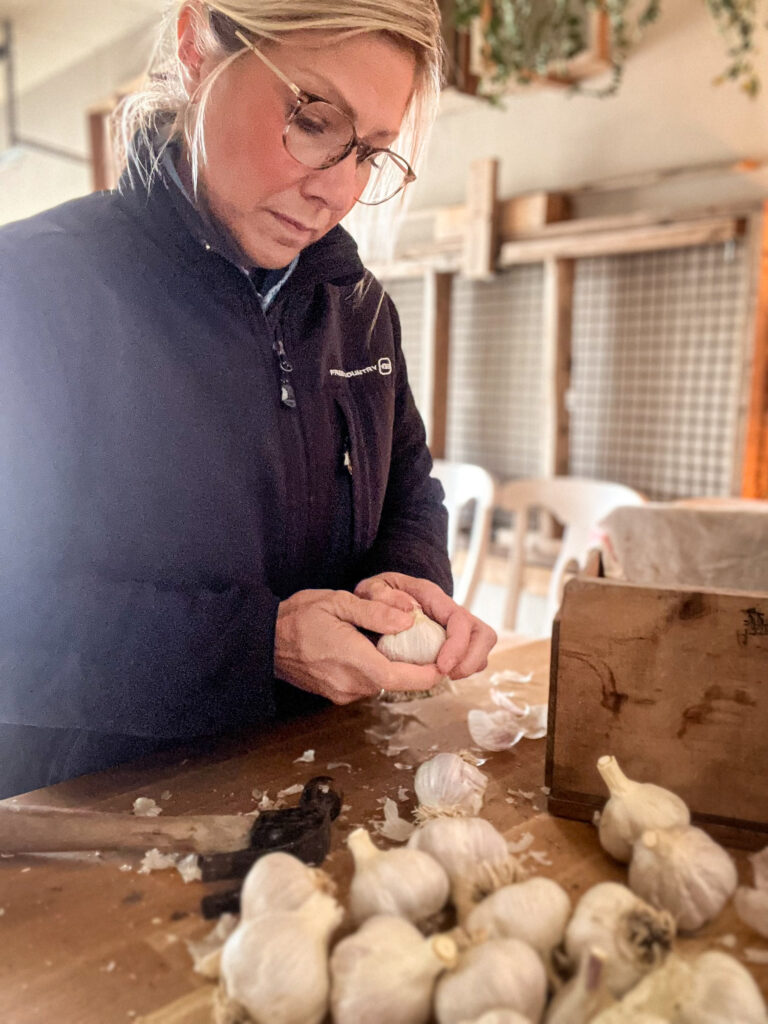
What are the Benefits of Fermented Garlic in Honey?
Fermented garlic in honey combines the potential benefits of both garlic and honey while also offering unique properties created through the fermentation process. Here are some of the potential benefits:
Immune Support
Both garlic and honey have antimicrobial and immune-boosting properties. Garlic contains allicin, a compound known for its potential to support the immune system, while honey has natural antibacterial and antiviral properties.
Anti-Inflammatory
Garlic and honey both possess anti-inflammatory properties. Consuming this combination may help reduce inflammation in the body.
Heart Health
Garlic is known for its potential to improve heart health by lowering blood pressure and reducing cholesterol levels. Honey, particularly when used in moderation, may also have cardiovascular benefits.
Digestive Health
Fermentation can make the compounds in garlic more digestible and less likely to cause digestive discomfort. It can also contribute to a healthier gut microbiome.
Antioxidant Properties
Both garlic and honey are rich in antioxidants that can help neutralize harmful free radicals in the body, potentially reducing the risk of chronic diseases.
Respiratory Health
Garlic has been used traditionally to alleviate respiratory issues, such as coughs and colds. Honey’s soothing properties can complement this effect.
Cough and Sore Throat Relief
This is when we use our honied garlic most in our household. The combination of garlic and honey is often used as a natural remedy for soothing a sore throat or suppressing coughs.
Anti-Infection
Both garlic and honey have natural antibacterial and antiviral properties, making them effective in supporting the body’s defenses against infections.
Flavor Enhancement
Fermented garlic in honey can add a unique and delicious flavor to a variety of dishes, including salads, marinades, and dressings.
Preservation
The fermentation process can help preserve garlic, making it last longer. Honey’s natural antibacterial properties also help prevent spoilage.
*It’s important to note that while fermented garlic in honey offers potential health benefits, individual responses may vary. Moderation is key.
How to eat your new Fermented Jar of Goodness
I love to take a clove and smash it onto some buttered toast with a fork, smash it up into a soup or casserole, or use it like relish on a brat. But you can take a spoonful of the garlic (scoop out one clove) and eat it!
Remember that fermented garlic in honey has a sweet and savory taste with a milder garlic flavor due to the fermentation process. Start by using it in small quantities and adjust to your taste preferences.
The potential health benefits, flavor, and culinary uses make this a versatile and enjoyable addition to your diet. Add it to any recipe that you would normally add garlic to. I love making up a batch of this right before cold and flu season so I can make sure we have a jar of it on hand.

Here are some other ways to incorporate garlic honey into your meal.
Salads: Finely chop or mince a clove of fermented garlic and mix it into salad dressings for an extra burst of flavor.
Marinades: Use the garlic-infused honey as a marinade for meats, seafood, or vegetables. It can add depth and sweetness to your dishes.
Stir-Fries and Sauteed Dishes: Add a clove of minced fermented garlic to stir-fries or sautéed vegetables for an extra layer of flavor.
In Soups and Stews: Drop a clove or two of fermented garlic into soups and stews during the cooking process to infuse them with a sweet and savory taste.
As a Topping: Use it as a topping for pizza, pasta, or grilled foods, similar to how you might use roasted garlic.
Tea or Hot Water: Dissolve a small amount of the honey in a cup of hot water or herbal tea. It can be soothing and potentially beneficial for respiratory health.
As a Condiment: Use it as a condiment for dishes like tacos, burgers, sandwiches, or hot dogs.
Cold Remedies: If you have a sore throat or a cold, consider taking a teaspoon of the honey-garlic mixture to soothe your throat and potentially help with congestion.
Always use clean utensils when extracting the garlic or honey from the jar to prevent contamination, and store the jar in a cool, dark place to maintain its quality over time.
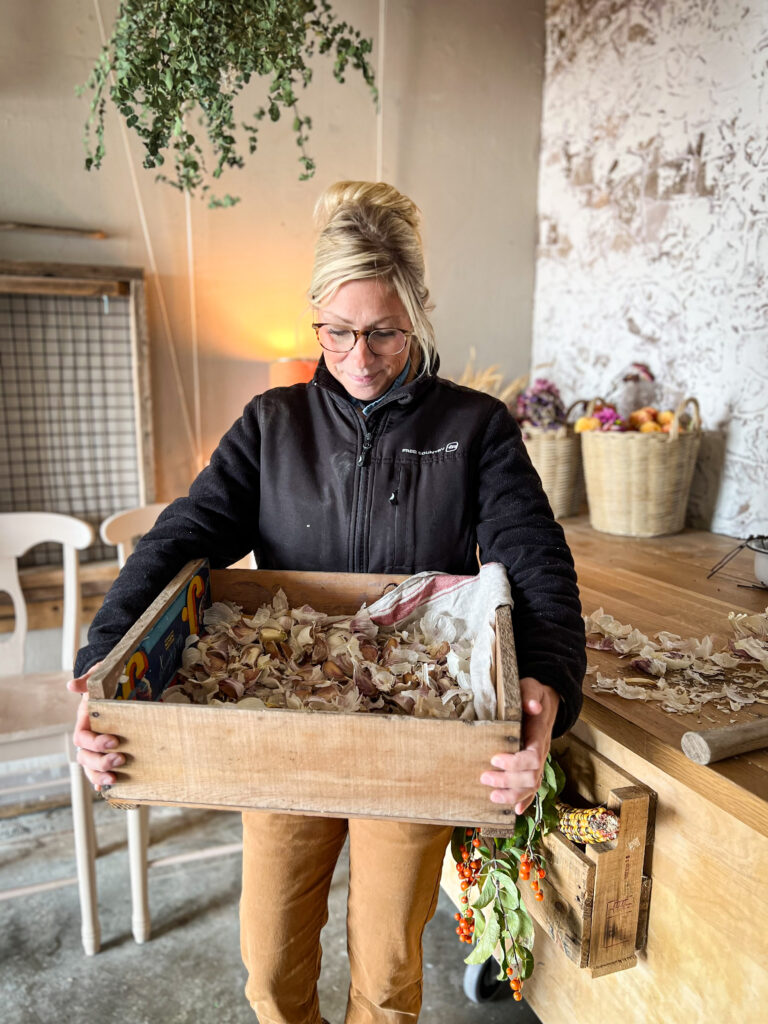
A few Fermented Garlic and Honey Considerations
I always say everything in moderation. And while fermented garlic in honey can offer potential health benefits and is generally safe for most people, there are a few considerations and precautions to keep in mind.
Allergies: Ensure that you are not allergic to garlic or honey before consuming this mixture. Allergic reactions to either ingredient can range from mild to severe and may include symptoms like itching, swelling, hives, or difficulty breathing. If you have a known allergy to garlic or honey, avoid this preparation.
Moderation: While garlic is known for its health benefits, consuming excessive amounts of garlic in any form can lead to digestive discomfort, such as upset stomach, acid reflux, or flatulence. Start with small amounts and monitor your body’s response.
Garlic Breath: Garlic can cause strong breath odors. While the fermentation process may mellow the odor somewhat, be prepared for the possibility of garlic breath after consumption. 😉
Medication Interactions: If you’re taking medications or have underlying health conditions, consult with a healthcare professional. Garlic and honey can interact with certain medications, especially blood-thinning medications. It’s important to understand how these interactions might affect your health.
Fermentation Process: Be cautious about the quality of the fermentation. Make sure the garlic remains submerged in the honey throughout the process to prevent spoilage. If you see mold or detect an unusual odor, discard the mixture. Whenever I’m fermenting something I always use the rule ‘if it looks or smells bad, it probably is’ and then toss it out.
Storage: Store the jar in a cool, dark place to maintain the quality of the fermented garlic in honey. If you see signs of spoilage, such as bubbling or strange smells, it’s best to discard the entire batch.
How to Grow Garlic the Video!
Why You’ll Love Having a Jar of Honey Garlic on hand
- Add it to a gift basket for Mothers, Fathers Day or Christmas.
- If you grow lots of garlic, like we do, this is one way to incorporate it into your arsenal of cold and flu season remedies.
- Speaking of remedies. I love me a natural one and this fermented garlic in honey recipe is just that!
Other Garlic-Inspired Posts
Learn how to Braid Garlic for Storage
Making Garlic Powder from Scratch
My Favorite Garlic Scape Butter Recipe
Printable Recipe Card
Fermented Garlic in Honey
Equipment
- 1 clean jar with lid
- 1 knife
- 1 glass weight
Ingredients
- several cloves of peeled Garlic
- enough Honey to cover the jar of Garlic
Instructions
- Peel the garlic cloves and trim the ends if necessary. Smash a bit to help release the allicin. If you're using larger garlic cloves, you can cut them in half or quarters for easier consumption.
- Ensure that your glass jar and lid are thoroughly clean and dry.
- Place a layer of garlic cloves at the bottom of the jar.
- If you want to infuse your fermented garlic with additional flavors, now is the time to add herbs or spices. Simply sprinkle them over the first layer of garlic.
- Slowly pour raw honey over the garlic cloves until they are completely covered. Leave about 1" of space to the top of the jar. Use a clean knife slide in and out of the jar to make sure there are no air bubbles trapped inside.
- Screw the lid onto the jar, but not too tightly. The fermentation process produces gas, and a too-tight lid can cause pressure to build up.
- Place the jar in a cool, dark place and allow it to ferment for at least a few weeks, though many people prefer to leave it for several months to develop a richer flavor. Check the jar occasionally to make sure the garlic remains submerged in honey. If some garlic pieces float to the top, press them down to ensure they're covered.
Notes
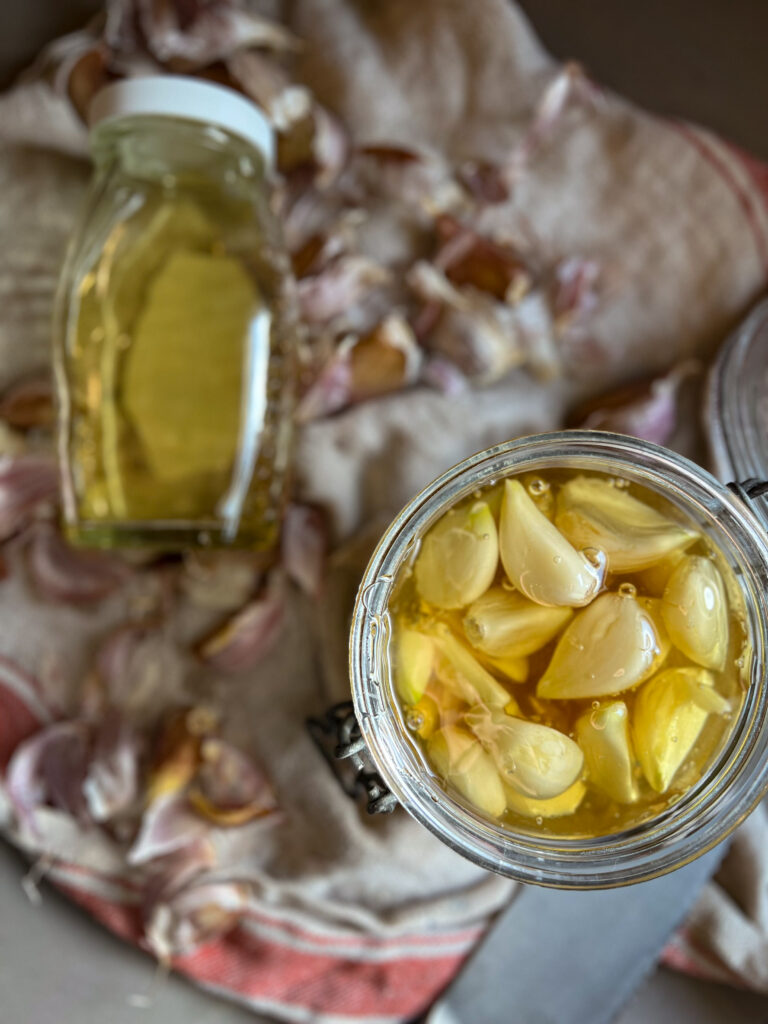
Questions People are asking about Fermented Garlic
Does it look or smell bad? If so, my general rule is to toss it out. Once fermentation is complete, seal your jar with a tight-fitting lid. Storing your honey garlic in a cool, dark spot and making sure the garlic is always completely submerged in the honey is key.
Typically, fermented garlic in honey can last for several months to over a year when stored properly. Some enthusiasts even claim it can last indefinitely if stored in optimal conditions. Over time, the flavors may change and intensify, but this doesn’t necessarily indicate spoilage. It’s common for honey to crystallize, but this is a natural process and doesn’t render the mixture unsafe to consume.
I always say, everything in moderation. But, before making significant dietary changes, especially if you have specific health concerns or conditions, it’s advisable to consult with a healthcare professional or a registered dietitian who can provide personalized guidance based on your unique health needs and dietary preferences. Read more about this above!
Pin this for later!
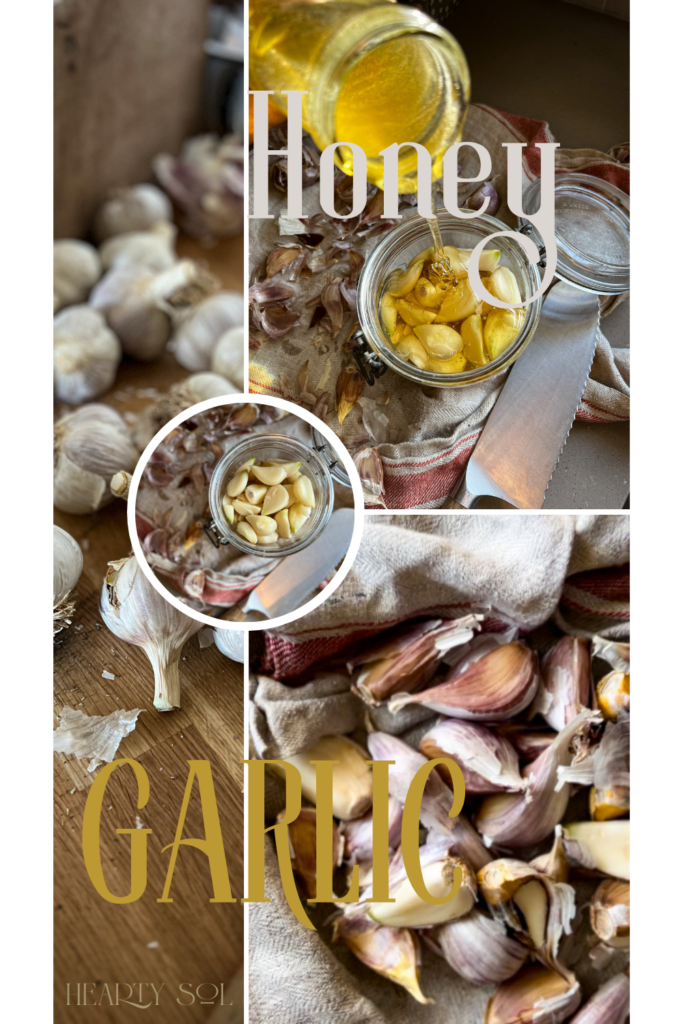

Affiliate Disclosure & Content Disclaimer
This post may contain affiliate links from a paid sponsor, Amazon or other program. When you use these links to make a purchase I earn a small commission at no extra cost to you. This allows me to continue creating the content that you love. The content in this article is created for information only and based on my research and/or opinion.
Emily T.
DAILY INSPIRATION ON THE GRAM @hearty.sol
it's hip to be square!
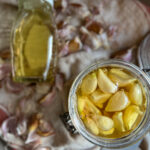
View comments
+ Leave a comment